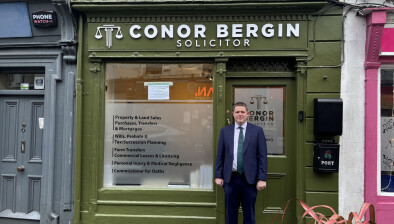High Court: Docklands development decision quashed

Andrew McKeown BL
Mr Justice Richard Humphreys has quashed An Bord Pleanála’s (ABP) decision granting planning permission for the construction of buildings taller than allowed for in the development scheme for the Docklands.

About this case:
- Citation:[2020] IEHC 557
- Judgment:
- Court:High Court
- Judge:Mr Justice Richard Humphreys
Background
The Planning and Development Act 2000 (Designation of Strategic Development Zone: North Lotts and Grand Canal Dock) Order 2012 (S.I. No. 530 of 2012) designated Dublin City Council (DCC) as development agency to prepare a planning scheme for the docklands area. The proposal was to have a strategic development zone (SDZ) designation to allow fast track planning in order to maintain the focus on regeneration of the area.
The DCC prepared the scheme, described by the Government as “world class”, dividing the docklands into city blocks. The relevant area in this case was the eastward side of a block by Sherriff Street Upper, with a designated maximum of six storey commercial and seven storey residential development.
The making of the scheme was appealed to ABP, seeking an increase in building heights. These were rejected, and the planning scheme approved in May 2014. In December 2015 a first planning permission was granted for a seven-storey block of residential units on the site.
The Planning and Development (Housing) and Residential Tenancies Act 2016 provides for strategic housing development (SHD), large housing development schemes where the planning application may be made directly to ABP for a limited time period, potentially up to the end of 2021. The present case came within the definition specified in the Act. Guideline-compliant applications may be approved even where the provisions of the development plan indicate otherwise. This doesn’t apply to a planning scheme for an SDZ (Spencer Place Development Company Ltd v Dublin City Council [2020] IECA 268).
In February 2019, Spencer Place Development Company Ltd (the developer) made a fourth planning application, stating that the guidelines should be complied with pending any formal amendment to the planning scheme. A height increase up to thirteen storeys was sought. DCC refused in May 2019.
The developers sought declaratory relief that the guidelines should be followed. That was refused by Mr Justice Garrett Simons in Spencer Place Development Company Ltd v Dublin City Council [2019] IEHC 384. An appeal was rejected ([2020] IECA 268).
DCC submitted proposed amendments to the planning scheme in May 2019. In October 2019, ABP determined that the amendment constituted a material change under the Planning and Development Act 2000 s.170A, and commenced a consultation process. The proposed amendments still await a decision by ABP. It cannot amend the proposed amendment unless it would not represent a more significant change than that which was proposed (s.170A(4)(b)). The amendment would retain the general 6/7 storey maximum, but would allow up to twelve storeys at corners and an additional storey set back.
A fifth planning application was lodged in August 2019 by way of a SHD application directly to ABP, seeking a height increase for up to 13 storeys. DCC’s view was that there would be “significant negative impact” and the development would represent “a bulky and inelegant design response that would represent a monolithic appearance”. DCC opined that it “would provide a poor standard of residential accommodation” with “blank walls for long stretches of the elevations together with service doors and venting is poor and could result in a barren and featureless street at eye level”. The inspector recommended refusal of permission essentially on the grounds that it was not compatible with the planning scheme as it stood at that point in time.
In December 2019, ABP made a first decision, disagreeing with the inspector, granting permission. Judicial review proceedings were brought by DCC. Certiorari was granted by consent in January 2020 and the matter remitted back to ABP. A second decision was made in April 2020 to grant permission for building heights in excess of those provided for in the scheme. Judicial review proceedings were instituted.
Judicial review
A case that is potentially relevant to costs, Heather Hill Management Company CLG v An Bord Pleanála [2019] IEHC 186 is currently under appeal, but all parties agreed that the case could proceed on the basis of applying the principles of s.50B of the 2000 Act even if the law were to subsequently evolve.
Implicit in the impugned decision was ABP’s view that s.9(6) of the 2016 Act, and the Planning and Development Act 2000 s.37(2), confer the jurisdiction on it to grant permission in an SDZ in material contravention of a planning scheme.
Brian Foley SC (with Rosalind O’Connell BL) for ABP, and Eamon Galligan SC (with Suzanne Murray BL) for the developer, placed reliance on s.4(4) of the 2016 Act which provides that in applying for permission for a SHD that is located in a SDZ, a developer may elect to apply to the planning authority under s.34 of the Act of 2000 rather than s.4(4) of the 2016 Act and, accordingly, s.170 applies to the application to which s.34 relates. The Oireachtas therefore empowered developers to apply either directly to DCC with no appeal under normal SDZ rules or directly to ABP under SHD rules. Mr Justice Humphreys said that the conclusion that ABP has no jurisdiction to depart from the planning scheme is consistent with there being such an option in s.4(4), “because it would be totally inconsistent and illogical if fundamentally different rules applied at the whim of the developer making the application”.
However, in a normal SDZ application, DCC (represented by Stephen Dodd SC with Stephen Hughes BL), is bound by the planning scheme per s.170(2) of the 2000 Act. The judge said that it would be “illogical to simply give an option that would fundamentally change the outcome, which would be the result if ABP did in fact have jurisdiction to depart from the scheme”.
Mr Foley SC argued that an interpretation that similar rules apply would deprive the election of a benefit, but that seemed to the judge to be a desirable and rational outcome. “Developers should not be able to game the system.”
There was no rational basis for giving an absolute choice between two entirely different regimes with different rules and potentially different outcomes: “It’s hard to see what’s in it for the public interest.” The judge said it would be inconsistent and illogical if the mere choice of forum would permit ABP to materially depart from the planning scheme in a way that DCC could not.
The court also said that the intention of the legislation was that the scheme has priority, and accordingly “that scheme could not be diluted simply by being mentioned or incorporated into the development plan”.
Mr Foley placed stress on government policy regarding the need for more housing. However, the judge said that “the best way to ensure that such developments are ‘sustainable’ in the sense that they are built in the right place, to the right design, rather than to have other policy considerations overwhelm environmental values, is to follow an overall plan that is adopted in a more holistic, overall and considered way than in the high-pressure situation of a given application.”
“An overall plan seems more likely to promote a high level of environmental protection than ad hoc decisions.”
Conclusion
ABP had no jurisdiction to grant the application. Its decision was quashed, and the court declined to make an order referring the matter back to ABP under Ord. 84, r. 27(4) RSC because it has no jurisdiction.










